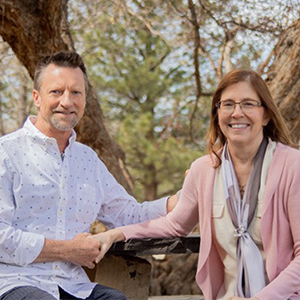Are you feeling extra anxious with all the restrictions of the Coronavirus? This is understandable. There might be many reasons for your anxiety:
- Loss of your job, reduced work hours or decrease in the value of your investments
- Inability to get out of the house
- Less social interaction
- Kids at home with nothing to do, and/or you are now asked to be their homeschool parent
- Strained relationship with your significant other, and now you are together 24/7.
Many of the things we used to do to distract ourselves from our anxiety are suddenly missing from our lives: seeing friends, eating out, going to work, the gym, school, etc. Now that you are stuck at home with all your anxiety, what can you do?
Self-Regulation
In my last blog I described how to use the “wet noodle” immediately in the moment of stress. You can check that out here.
Grounding with Intentional Breathing
When we are anxious, it is usually because we are thinking of something disturbing from our past, we are worrying about the future, or both. Grounding relieves our anxiety by helping us be present in the current moment. Yes, you may have concerns about whether you will be able to pay next month’s rent, or what you will eat. But right in this current moment, you are fine.
With my clients, I usually combine intentional breathing with a specific grounding exercise. First, get in a comfortable position. Having two feet on the ground, or sitting/lying on the ground can further ground you. If you feel comfortable to close your eyes, that can be helpful. Begin breathing in through your nose as slowly as you can. Feel the air expand your chest and stomach. Then, slowly breath out through your mouth. Try to make your exhale slightly longer than your inhale. This serves to slow your heart rate which usually speeds up when you are anxious. Breathe in and out slowly for several breaths.
We will now begin the grounding exercise. As you continue the slow intentional breathing, become aware of what your body is feeling. Feel the floor under your feet/body. Feel your chest expanding with your breath. Notice the texture of whatever your hands are touching. Breathe for several breaths.
Then, focus on your sense of hearing. Do you hear birds tweeting? The sound of your refrigerator? The sound of your own breathing? Notice, and breathe.
Next, open your eyes. Focus on one thing in the room. Notice any color, pattern or texture that the item has. Notice and breathe. Optionally, you can use your sense of smell and taste in the same way.
Find some rest in these postures. When you are ready to resume other activities, do them slowly and mindfully.
Safe Space and Container Box
Either of these techniques can be used individually or together. For Safe Space, think of a place you have physically been that felt relaxing to you. It could be the beach, a mountain trail, or your grandmother’s kitchen. It helps to think of yourself in this space alone, because envisioning people you have been there with in the past might conjure up stressful relational memories.
Now to begin. Picture yourself there. What do your five senses notice? For example, my safe space is the beach. I see the rolling waves, fluffy white clouds in the sky, and seagulls flying. I hear the sound of the waves, birds calling to each other and children playing. I feel the warm sand under my body and the cool water on my feet. I smell the salt air and the sun lotion on my body. I taste the salt in the water, a cool drink and a ripe peach. Are you feeling relaxed yet? I sure am. Wish I were there! Whatever your safe space, it helps if you write out everything your five senses could notice. If you don’t enjoy writing, just hold them in your mind. In moments of stress, you can “take” yourself there whenever you wish.
When my mind is racing with negative thoughts, it is helpful for me to contain them in a box. It helps if you find a physical container to use for this. It could be a drawer, a jar, an envelope – anything that will close. Take a slip of paper and describe in 2 – 3 words what you are worrying about. Don’t dwell on the worry, the idea is to release yourself from it for a period of time.
As an example, you could write “next month’s rent.” I sometimes fold the piece of paper very small. Then, I place the paper in a box with a lid and a small lock. As I do this, I consciously think about putting my negative thoughts away, so I can get a break from them. Once you close the container, you can use the Safe Space activity to get your mind off the negative thought. If you find the thought intruding again, open the container and re-shut it, either in your mind or physically. Then, direct your thoughts back to your Safe Space. You may need to do this several times. Be persistent.
Continuing On
Reducing your anxiety will not solve the problems you face, but it will help you weather the storm with a sense of peace. Many of the things you are worrying about cannot be controlled, so ruminating and stressing about them won’t help you. If you would like further help dealing with your anxiety, give us a call. During social distancing, we are offering online counseling sessions via Zoom.
We are here for you; you are not alone. Give us a call today.
Lisa 303-886-5920, David 720-724-7606.



